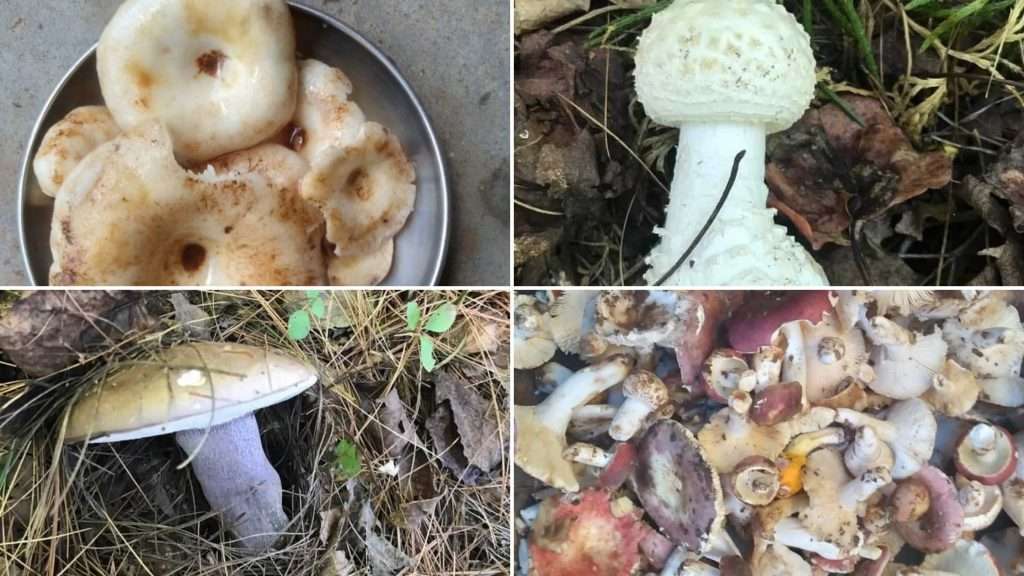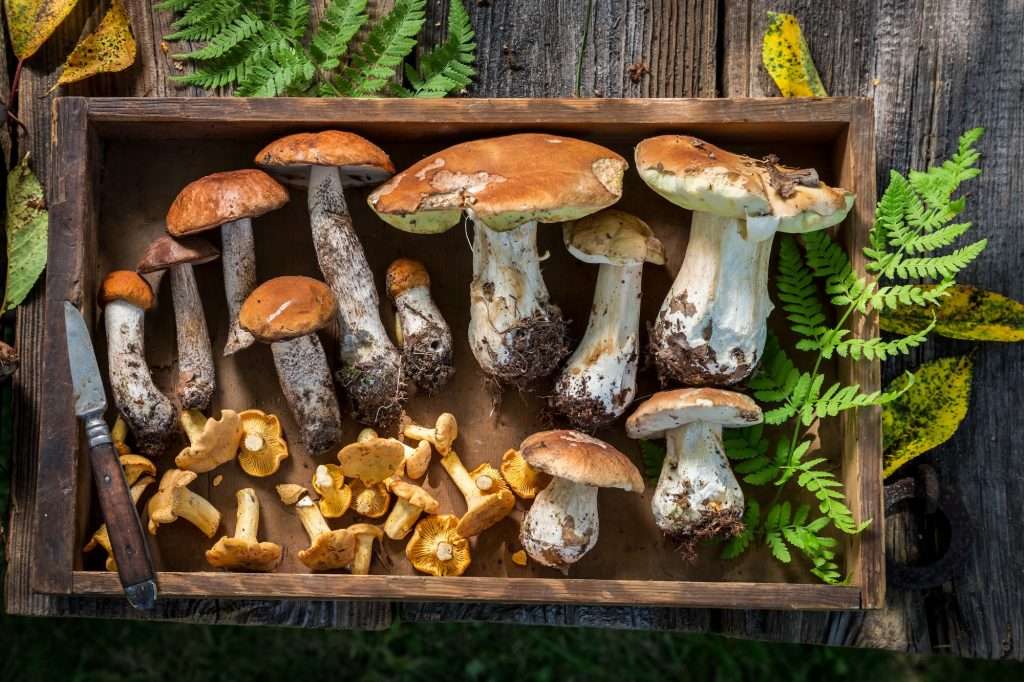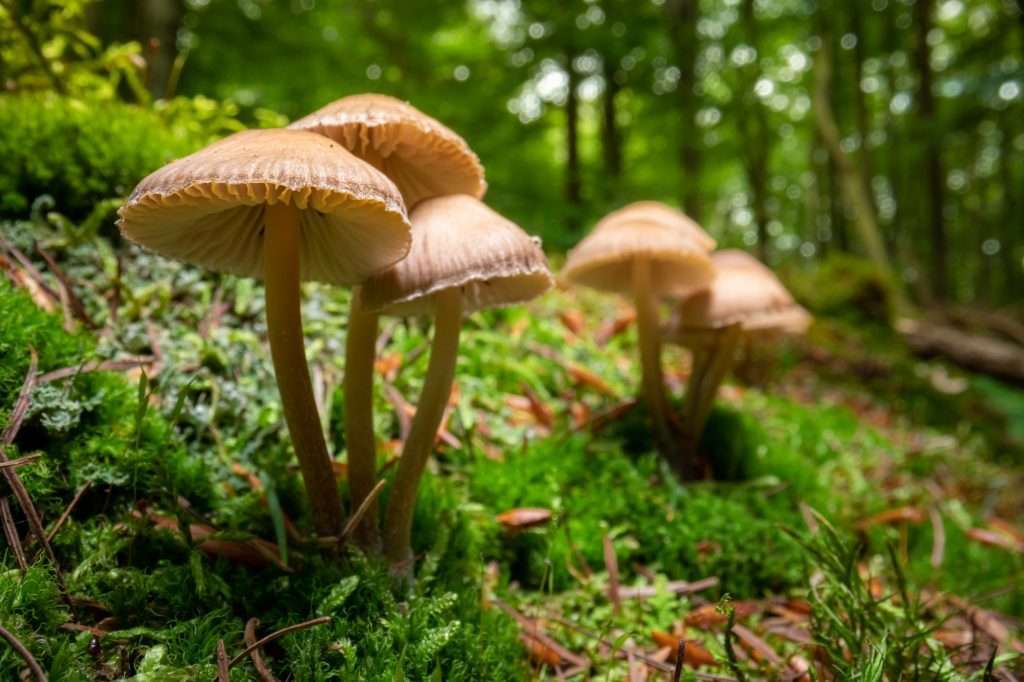The subterranean world especially in the forests is not a dead space but an extended network of connections between trees and plants, facilitated by the filamentous fungi. A world that builds a communication channel among the various immobile elements in a forest through passing of chemical signals from their filaments. These networks often invisible to the naked eyes manifest themselves as fruiting bodies called toadstools or mushrooms and form an important component of most ecosystems.
Known both for their toxicity as well as their medicinal and food uses, mushrooms have been picked from the wild for millennia until the modern age when efforts to cultivate some of these have been fruitful. Still mushrooms add that special feel to a human existence and to the well being of the environment where they exist by carrying out functions that are not entirely obvious at the first glance.
One of the most overlooked Non-timber forest produce (NTFP), mushrooms form an inalienable part of forests and meadows contributing to the many ecological processes and human resources for food and medicine. The dynamics of a forest ecosystem encompass a very important ingredient in the soil, that of decomposers without which the recycling ability of the soil is greatly compromised. Included in this group are fungi, both saprophytes and ectomycorrhizal that form a huge network inside the soil helping to make the nutrients available again through breakdown of complex biomolecules like lignin.
Mushroom can be cultivated in all the districts of Odisha. Generally there are three main types of edible mushroom i.e., (i) Paddy straw mushroom, (ii) Oyster mushroom and (iii) Button mushroom which are suitable for commercial cultivation.
READ MORE:
- Importance of Environment to Human Life
- Palua (Arrowroot) – A Wild Edible Tuber In Tribal Hinterlands
- Quails [Endangered Species]: A Source of Livelihood for Rural India
Importance of wild mushrooms

Mushrooms have long been used as a valuable food source and as traditional medicines around the world. Records of health-promoting properties such as antioxidant, antimicrobial, anticancer, cholesterol-lowering, and immunostimulatory effects have been reported for some species of mushrooms.
Wild edible mushrooms have been utilized for food and medicines since thousands of years ago. They are important sources of food for tribal communities who mostly live in the forest and depend on natural resources for their livelihood. In recent times, depletion of forest areas and changing lifestyles of tribal people have limited the use of wild edible mushrooms for food and medicines.
Demand for wild edible mushrooms are also very low because of ignorance and perception among the people on their use and edibility. This has changed the mindset of tribal communities to exploit them as a source of livelihood. Therefore, it is very important to document and generate the indigenous knowledge system on wild edible mushrooms to exploit them for the welfare of mankind.
Wild edible mushrooms about 970 of which exist around the world can be an important tool to fight the malnutrition and hunger around the world, especially in regions where there are marginalized communities with little access to regular cultivable land for generation of food crops. This specifically relates to the communities living in isolated patches or fringes of forests in tropical regions of the world.
They are a much sought after delicacy with a huge economic potential with the rare edible ones fetching high returns in the global market like the truffles which can go up to billions of dollars annually. Gucchi – a type of mushroom found In India, is one of the World’s most expensive mushroom. It costs up to Rs. 30000/Kg. India is the only place where the rare Gucchi mushroom is found. This variety has a host of health benefits, and a unique flavour that makes it stand apart from other types of mushrooms.

There are many wild mushrooms that are a source of medicine and are used in local therapies to cure minor illnesses. There is a growing interest in the possibilities of obtaining valuable pharmaceuticals from mushrooms for usage for treating diseases. In the last decade, the interest for pharmaceutical potential of mushrooms has been increased rapidly, and it has been suggested that many mushrooms are like mini-pharmaceutical factories producing compounds with miraculous biological properties.
More than 100 medicinal functions are produced by mushrooms and fungi and the key medicinal uses are antioxidant, anticancer, antidiabetic, antiallergic, immunomodulating, cardiovascular protector, anticholesterolemic, antiviral, antibacterial, antiparasitic, antifungal, detoxification, and hepatoprotective effects; they also protect against tumor development and inflammatory processes.
Very often the restoration of deforested land has been carried out by mere planting of trees which do not survive beyond the caring time period. The reason may be the absence of subterranean network of these ectomycorhizal systems which help the trees to sustain by providing minerals in available form from the soil and providing other biological components.
The fungi in the soil are now being recognized as a factor that helps trees overcome biotic and diabetic stress like pathogens, drought and extreme weather conditions. It is estimated that about 60% of the world trees and plants have some kind of ectomycorhizal system. Thus any attempt to reverse the greenhouse effect and restore the planet’s equilibrium would involve the fungi as well.
Of the 17 UN Goals defined to build a sustainable future for the world, 11 can be directly linked to the judicious use of fungi and mushrooms around the world in a sustainable manner. Thus any modern world development would still base itself on the maintenance of the crucial fungi in the environment.
Challenges in the conservation of local mushrooms

- Most mushrooms that are endemic to a region and part of the local culture are also least documented with their utility and specialty of being carried out through oral communications rather than documentation. More often than not these are passed on across generations through demonstration of their uses either in food, medicine or as active ingredients in other products. Thus the ethno mycological knowledge is both limited and incongruous across regions making it vulnerable to loss due to disruption of traditional living patterns in predominantly tribal regions.
- The large-scale deforestation accompanied by commercial cultivation of selective forest or tree species based on the agrecology of the region or other commercial considerations often leads to loss of the native species that nurture and sustain small isolated patches of mushrooms that contribute immensely to the subsoil stability and nutrients dynamics. This is because the copious amounts of leaf litter in the deciduous forests helps to supply the fungi with recyclable material which is lost with the loss of trees and holds especially true for the ectomycorrhizal species.
- Supply and demand gap for mushrooms especially for the wild and rare species often results in over-harvesting leading to decimation of stands of mushrooms. The vicious cycle of demand and supply where increasing demand leads to unbridled harvest which in turn leads to lowered supply and heightened demand often takes a toll on wild mushrooms till they become extinct without an ability to regenerate.
- Loss of specific habitats is a great concern for mushrooms that require specific symbiosis like the termite symbiotic fungi. Many of these are localized on termite mounds and bear fruiting bodies during specific time of the year, mainly the monsoons. Damage to the termite mounds by any natural or man-made causes leads to the vanishing of such species from the environment, depriving the dependent fora and fauna of a mode of sustenance.
- High human and livestock interference in natural forests for collecting food, fuel wood, fodder and NTFPs is also a reason for the decline of mushroom growth in the forests.
Strategies to make wild mushrooms sustainable

- Inventing new procedures to cultivate still uncultivable but popular mushrooms using local resources and their commercialization. After such systems are well established for sustainable production, this would not only help generate additional employment but form an important tool in fighting poverty, hunger and malnutrition.
- Collaborative research using private and public institutions to identify, study, conserve as well as propagate mushrooms with economic potential in a region specific manner to make the maximum out of mushrooms that are endemic in their origin and limited to specific geographical locations.
- Preventing the over harvesting of mushrooms by locals where they are threatened and providing them with alternate sources of food and income.
- Adding the locally important mushrooms to the list of biodiversity and creating and awareness among the local population about their importance and conservation for better ecological balance and improved productivity from forests.
- Promoting mushroom cultivation under the various livelihood support programmes of the Government, especially for landless, small and marginal farmers and women farmers.
- Providing marketing linkages and support for mushroom farmers to market their produce.


